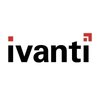
i
Promilo
Filter interviews by
Promilo Business Analyst Interview Questions and Answers
Promilo Business Analyst Interview Experiences
1 interview found
I applied via LinkedIn and was interviewed before Sep 2023. There were 2 interview rounds.
Excel workbook complete
(2 Questions)
- Q1. Tell me about the gender equation
- Ans.
The gender equation refers to the balance of power, opportunities, and representation between different genders in society.
The gender equation is a complex issue influenced by cultural, social, and economic factors.
It involves examining disparities in areas such as pay, leadership positions, and access to education and healthcare.
Efforts to address the gender equation include promoting gender equality, diversity, and i...
- Q2. What can we say by seeing this graph
- Ans.
The graph shows a steady increase in sales over the past year.
The graph indicates a positive trend in sales performance.
There is a clear upward trajectory in the sales data.
The sales figures have been consistently improving over time.
The company's revenue appears to be growing steadily.
There may have been successful marketing campaigns or product launches contributing to the sales growth.
Skills evaluated in this interview
Top trending discussions






Interview questions from similar companies

I appeared for an interview in May 2025, where I was asked the following questions.
- Q1. What are the implementations done in the project
- Ans.
Implemented data cleaning, visualization, and predictive modeling to enhance decision-making and insights from the dataset.
Data Cleaning: Removed duplicates and handled missing values using techniques like mean imputation.
Data Visualization: Created dashboards using Tableau to present key metrics and trends.
Predictive Modeling: Developed a regression model to forecast sales based on historical data.
Collaboration: Worke...
- Q2. What libraries are used
- Ans.
Data analysts use various libraries for data manipulation, analysis, and visualization, enhancing their workflow and insights.
Pandas: Essential for data manipulation and analysis, providing data structures like DataFrames.
NumPy: Used for numerical computing, offering support for large, multi-dimensional arrays and matrices.
Matplotlib: A plotting library for creating static, animated, and interactive visualizations in P...
- Q3. How output is generated
- Ans.
Output generation involves processing data through various stages to produce meaningful results.
Data Collection: Gathering raw data from various sources, e.g., surveys, databases.
Data Cleaning: Removing inaccuracies and inconsistencies, e.g., correcting typos in datasets.
Data Analysis: Applying statistical methods to interpret data, e.g., using regression analysis to find trends.
Data Visualization: Creating charts and ...
- Q4. Provide any alternative code
- Ans.
Explore alternative code solutions for data analysis tasks to enhance efficiency and readability.
Use vectorized operations in NumPy instead of loops for faster computations. Example: np.sum(array) vs. for loop.
Leverage pandas' built-in functions like groupby() for aggregating data instead of manual calculations.
Consider using list comprehensions for concise and readable code. Example: [x*2 for x in range(10)] instead o...
Interview Preparation Tips

I appeared for an interview in May 2025, where I was asked the following questions.
- Q1. What methods can you use to clean and modify a large dataset containing null values and duplicates in SQL?
- Ans.
Methods to clean large datasets in SQL include handling nulls, removing duplicates, and transforming data types.
Use the COALESCE function to replace null values: SELECT COALESCE(column_name, 'default_value') FROM table_name;
Identify and remove duplicates using the DISTINCT keyword: SELECT DISTINCT * FROM table_name;
Use the ROW_NUMBER() function to identify duplicates: WITH CTE AS (SELECT *, ROW_NUMBER() OVER (PARTITION...
- Q2. How can you analyze sales data from different regions to identify performance trends and propose actionable insights?
- Ans.
Analyze regional sales data to identify trends and derive actionable insights for improved performance.
Collect sales data from various regions and organize it in a centralized database.
Use data visualization tools like Tableau or Power BI to create dashboards that highlight sales trends over time.
Segment the data by region, product category, and time period to identify specific performance patterns.
Conduct comparative ...
Interview Preparation Tips

I appeared for an interview in May 2025, where I was asked the following questions.
- Q1. General information?
- Q2. Knowledge about the topic?

I appeared for an interview in Dec 2024, where I was asked the following questions.
- Q1. How do you communicate complex data findings to non-technical stakeholders?
- Ans.
I simplify complex data insights using visuals, storytelling, and relatable examples for non-technical stakeholders.
Use data visualization tools like Tableau or Power BI to create clear charts and graphs that highlight key trends.
Employ storytelling techniques to frame data findings within a narrative that resonates with the audience's experiences.
Relate complex data points to everyday scenarios; for example, explainin...
- Q2. Describe a time when your analysis led to a significant business decision.
- Ans.
My analysis of customer feedback led to a major product redesign, boosting sales by 30% in six months.
Conducted a thorough analysis of customer feedback data from surveys and reviews.
Identified key pain points in the product that were affecting customer satisfaction.
Presented findings to the product development team, highlighting the need for a redesign.
Collaborated with the team to implement changes based on data insi...
- Q3. How do you ensure your analysis aligns with business goals?
- Ans.
I align my analysis with business goals by understanding objectives, collaborating with stakeholders, and using relevant metrics.
Engage with stakeholders to understand their objectives and key performance indicators (KPIs). For example, if a sales team aims to increase revenue, I focus on analyzing sales data and customer behavior.
Regularly review business goals and adjust analysis accordingly. If a company shifts its ...
- Q4. What are some common data quality issues you've encountered?
- Ans.
Common data quality issues include inaccuracies, missing values, duplicates, and inconsistencies that can affect analysis outcomes.
Inaccurate data: For example, incorrect patient ages in a medical database can lead to wrong treatment decisions.
Missing values: A dataset with missing entries, such as incomplete survey responses, can skew analysis results.
Duplicate records: Having multiple entries for the same individual,...
- Q5. What steps do you follow to clean a large dataset?
- Ans.
Cleaning a large dataset involves several systematic steps to ensure data quality and usability.
1. Remove duplicates: Identify and eliminate duplicate records to ensure each entry is unique.
2. Handle missing values: Decide whether to fill in missing data, remove records, or use imputation techniques.
3. Standardize formats: Ensure consistency in data formats, such as date formats (e.g., YYYY-MM-DD) or text casing.
4. Val...
- Q6. How do you deal with inconsistent or messy data?
- Ans.
I handle inconsistent data by identifying issues, cleaning, and validating data to ensure accuracy and reliability.
Identify inconsistencies: Check for duplicate entries, missing values, or incorrect formats. For example, dates in different formats.
Data cleaning: Use techniques like imputation for missing values or standardization for categorical variables. E.g., converting 'NY' and 'New York' to a single format.
Validat...
- Q7. If two departments have conflicting data, how do you resolve it?
- Ans.
To resolve conflicting data between departments, I would analyze, communicate, and collaborate to find a consensus.
Identify the source of the data conflict by reviewing the data collection methods used by each department.
Engage with stakeholders from both departments to understand their perspectives and the context of the data.
Conduct a data audit to verify the accuracy and reliability of the conflicting data points.
Us...
- Q8. How would you approach analyzing a marketing campaign’s success?
- Ans.
To analyze a marketing campaign's success, I would evaluate key metrics, gather data, and assess ROI and customer engagement.
Define clear objectives: For example, increase website traffic by 20%.
Identify key performance indicators (KPIs): Metrics like conversion rate, click-through rate, and customer acquisition cost.
Collect data: Use tools like Google Analytics to gather data on user behavior and campaign performance.
...
- Q9. You notice a sudden drop in sales – how would you investigate it?
- Ans.
Investigate sudden sales drop by analyzing data, market trends, and customer feedback to identify root causes.
Analyze sales data over time to identify when the drop occurred and if it correlates with any specific events.
Examine customer feedback and reviews to see if there are any common complaints or issues.
Review marketing campaigns to determine if there were any changes in strategy or budget that could have affected...
- Q10. Can you walk us through a dashboard you’ve built?
- Ans.
I built an interactive sales dashboard to visualize key metrics and trends for better decision-making.
Utilized Tableau to create a dashboard that tracks monthly sales performance.
Incorporated filters for region, product category, and time period to allow users to customize their view.
Displayed key metrics such as total sales, average order value, and sales growth percentage.
Included visualizations like bar charts for s...
- Q11. How do you decide what type of chart to use for your data?
- Ans.
Choosing the right chart depends on data type, relationships, and the story you want to tell.
Use bar charts for comparing categories (e.g., sales by region).
Line charts are ideal for showing trends over time (e.g., stock prices).
Pie charts can represent parts of a whole (e.g., market share).
Scatter plots are useful for showing relationships between two variables (e.g., height vs. weight).
Heatmaps can visualize data den...
- Q12. What tools do you use for data visualization (e.g., Tableau, Power BI, Matplotlib)?
- Ans.
I utilize various tools for data visualization, including Tableau, Power BI, and Matplotlib, to create insightful visual representations.
Tableau: Excellent for interactive dashboards and handling large datasets.
Power BI: Integrates well with Microsoft products and offers robust reporting features.
Matplotlib: A Python library ideal for creating static, animated, and interactive visualizations.
Seaborn: Built on Matplotli...
- Q13. Can you explain vectorization and why it’s useful?
- Ans.
Vectorization is the process of optimizing operations on arrays for efficiency, leveraging parallel processing capabilities.
Vectorization allows for batch processing of data, reducing the need for explicit loops.
It leverages low-level optimizations in libraries like NumPy, leading to faster computations.
Example: Instead of looping through an array to add 5 to each element, vectorization allows you to add 5 to the entir...
- Q14. How do you perform data cleaning and transformation?
- Ans.
Data cleaning and transformation involve preparing raw data for analysis by correcting errors and converting formats.
Identify and handle missing values, e.g., using mean imputation or removing rows.
Remove duplicates to ensure data integrity, e.g., using pandas' drop_duplicates() in Python.
Standardize data formats, such as converting date formats to a consistent style.
Normalize or scale numerical data for better analysi...
- Q15. What libraries have you used for data analysis in Python or R?
- Ans.
I have utilized various libraries in Python and R for data analysis, enhancing data manipulation, visualization, and statistical modeling.
Pandas: Used for data manipulation and analysis, providing data structures like DataFrames. Example: df = pd.read_csv('data.csv')
NumPy: Essential for numerical computations, offering support for arrays and matrices. Example: np.array([1, 2, 3])
Matplotlib: A plotting library for creat...
- Q16. How would you handle missing values in a dataset?
- Ans.
Handling missing values involves identifying, analyzing, and applying appropriate techniques to manage gaps in data effectively.
Identify missing values using methods like isnull() in pandas.
Remove rows with missing values if they are few, e.g., df.dropna().
Impute missing values using mean, median, or mode, e.g., df.fillna(df.mean()).
Use predictive modeling to estimate missing values based on other features.
Consider usi...
- Q17. How do you detect outliers?
- Ans.
Outlier detection involves identifying data points that deviate significantly from the rest of the dataset.
1. Statistical methods: Use Z-scores to identify points that are more than 3 standard deviations from the mean.
2. IQR method: Calculate the interquartile range (IQR) and identify points outside 1.5 times the IQR from the quartiles.
3. Visualization: Use box plots or scatter plots to visually inspect for outliers.
4....
- Q18. What is the Central Limit Theorem?
- Ans.
The Central Limit Theorem states that the distribution of sample means approaches a normal distribution as sample size increases.
The theorem applies regardless of the population's distribution shape.
For example, if you take multiple samples of a population, the means of those samples will form a normal distribution.
It is crucial for hypothesis testing and confidence interval estimation.
A common rule of thumb is that a ...
- Q19. Explain p-value and its significance.
- Ans.
P-value measures the strength of evidence against the null hypothesis in statistical hypothesis testing.
A p-value ranges from 0 to 1, with lower values indicating stronger evidence against the null hypothesis.
Common significance levels are 0.05, 0.01, and 0.001; a p-value below these thresholds suggests rejecting the null hypothesis.
For example, a p-value of 0.03 indicates a 3% probability of observing the data if the ...
- Q20. What is the difference between population and sample?
- Ans.
Population refers to the entire group being studied, while a sample is a subset of that group used for analysis.
Population includes all individuals or items of interest, e.g., all voters in a country.
Sample is a smaller group selected from the population, e.g., 1,000 voters surveyed.
Population parameters (like mean or variance) are fixed, while sample statistics can vary.
Sampling allows for cost-effective and time-effi...
Interview Preparation Tips

Data Analyst Interview Questions & Answers
Zaalima Developmentposted on 25 Jun 2025
I appeared for an interview in May 2025, where I was asked the following questions.
- Q1. What are the key library in python
- Ans.
Key Python libraries for data analysis include NumPy, Pandas, Matplotlib, and SciPy, each serving unique analytical purposes.
NumPy: Provides support for large, multi-dimensional arrays and matrices, along with a collection of mathematical functions. Example: np.array([1, 2, 3])
Pandas: Offers data structures like DataFrames for data manipulation and analysis. Example: pd.DataFrame({'A': [1, 2], 'B': [3, 4]})
Matplotlib: ...
- Q2. How you handle missing value in dataset
- Ans.
Handling missing values involves identifying, analyzing, and applying appropriate techniques to manage gaps in data.
Identify missing values using methods like isnull() in Python's pandas.
Analyze the pattern of missingness: is it random or systematic?
Impute missing values using mean, median, or mode for numerical data.
Use forward or backward fill methods for time series data.
Consider dropping rows or columns with excess...
- Q3. Can you explain how preprocessing in dataset
- Ans.
Data preprocessing involves cleaning and transforming raw data to prepare it for analysis.
Data Cleaning: Removing duplicates and handling missing values. For example, replacing missing age values with the median age.
Data Transformation: Normalizing or scaling data. For instance, scaling income data to a range of 0 to 1.
Feature Encoding: Converting categorical variables into numerical format. For example, using one-hot ...

I applied via LinkedIn and was interviewed in Dec 2024. There were 2 interview rounds.
Based on my CV, they assigned me a task related to data migration.
(2 Questions)
- Q1. Project reviews
- Q2. Attendance regarding

I appeared for an interview in May 2025, where I was asked the following questions.
- Q1. How would you handle missing dataduring analysis?
- Ans.
Handling missing data involves identifying, assessing, and applying appropriate techniques to manage gaps in datasets.
Identify missing data: Use methods like 'isnull()' in Python to find missing values.
Assess the impact: Determine how missing data affects your analysis and results.
Imputation: Replace missing values with mean, median, or mode. For example, use the median for skewed distributions.
Remove missing data: If ...
- Q2. Explain the difference inner join and left join in SQL ? and example
- Ans.
Inner join returns matching records from both tables, while left join returns all records from the left table and matching from the right.
Inner Join: Combines rows from two tables where there is a match in both tables.
Left Join: Returns all rows from the left table and matched rows from the right table; unmatched rows from the right will show NULL.
Example of Inner Join: SELECT * FROM TableA INNER JOIN TableB ON TableA....
- Q3. Which visualisation have tools used and how do you decide which chart to used for a given dataset?
- Ans.
Choosing the right visualization depends on data type, audience, and insights needed.
Use bar charts for categorical comparisons (e.g., sales by region).
Line charts are ideal for trends over time (e.g., monthly revenue).
Pie charts can show proportions but are less effective for many categories.
Scatter plots help identify relationships between two variables (e.g., age vs. income).
Heatmaps visualize data density or correl...
I applied via Naukri.com and was interviewed before Aug 2023. There was 1 interview round.
Coding test, technical round, HR round
Interview Preparation Tips

I applied via Campus Placement and was interviewed before Sep 2021. There were 2 interview rounds.

Mcqs on javascript,. 1 coding question
Interview Preparation Tips
1 online coding
2 technical rounds DSA
1 tech managerial
1 hr
Os, DBMS, DSA, stacks, trees,
Promilo Interview FAQs
Tell us how to improve this page.
Interview Questions for Popular Designations
Overall Interview Experience Rating
based on 1 interview experience
Difficulty level
Duration
Interview Questions from Similar Companies
Promilo Business Analyst Reviews and Ratings
based on 1 review
Rating in categories
|
Front end Developer
7
salaries
| ₹3 L/yr - ₹6 L/yr |
|
Manager Enterprise Sales
4
salaries
| ₹6.3 L/yr - ₹8.1 L/yr |
|
Senior HR Executive
3
salaries
| ₹2.7 L/yr - ₹3.5 L/yr |

Zidio Development

NexTurn

Springbord Systems

Kanerika Software
- Home >
- Interviews >
- Promilo Interview Questions










